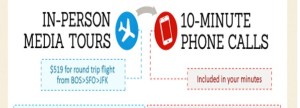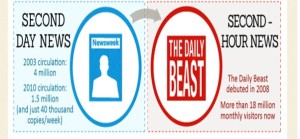Earlier this year I wrote about my five PR Pet Peeves:
#5: Client or prospect says, “I want to hire someone that has a good Rolodex” insinuating that the relationship we have precludes the story we are pitching.
#4: Those who want to send the pitch out to everyone and see who picks it up.
#3: Let’s spin that. Put a positive spin on that. Go do some PR on that.
#2: There’s no such thing as bad PR.
#1: I didn’t say that. The reporter took what I said out of context.
Apparently, I have more peeves of the pet variety:
Sending out a news release without following up – The caveat here is if you are sending out a release over the wire (PR Newswire, Business Wire, PR Web, etc.) for the sole reason of getting ranked higher on Google searches. Go for it. May want to consider writing a blog instead, but have at it.
However, if you are thinking the Good Morning America producer, the education reporter at the Washington Post or the business editor at the Chicago Tribune are waiting to receive your release sent out over one of the PR newswire services, forget it. Not going to happen. Major media. In the United States.
If you are a publicly-held company reporting your earnings, yes, the business wire services (Reuters, Dow Jones, Bloomberg) may use parts of the release – including a quote – but for the average company sending out a release over the wire thinking that major media (and a live person at the major outlet) will see and use…Not the case.
Relying on the vehicle more than the message – Many people are enamored by the myriad of touchpoints available to reach their real audience. Now don’t get me wrong, I’m a big fan of the book of face, Twitter, Instagram, Pinterest, etc. Companies should be absolutely taking advantage of these different ways to get what they want out to the right people. Those not doing so are not only missing the boat, they are missing opportunities to increase revenues, better public perception, etc.
The challenge occurs when the proper care is not used in developing and crafting the key messages. Empty and/or inappropriate/irrelevant messages do no good whatsoever.
Throwing marketing, advertising and PR under the same umbrella – While we are all communication professionals we all take a different approach. You wouldn’t want a podiatrist to perform heart surgery (trouble would be afoot). Asking an advertising agency to write a release is not the best approach. Ideally, you’d want the three disciplines to work together…wait a second, what am I doing….
I love public relations. Why am I focusing on some of the challenges we face on a daily basis? Here are three of the many aspects of public relations that rock:
Creating the story – The full story. Taking what we need to get across and developing around it. Looking at the story a different way. Going out for a walk and having “it” come to you. Bouncing your idea off of a colleague. Getting it to the compelling stage.
The chase – Knowing “that outlet” is the right one to reach the real audience and doing whatever it takes to get a hold off the reporter/producer and making it happen. Finding answers to possible hurdles.
Seeing the fruition of my efforts – The day I don’t find myself getting up early to get a copy of USA Today, looking on with anticipation at the local 5pm news or waiting – not so patiently – for the story to load on my laptop is the day I’ll be hanging it up.
What are your “loves” with public relations? Whatever they are, hold onto and embrace them – – they will help you manage and deal with those pesky pet peeves.







